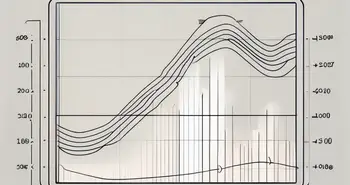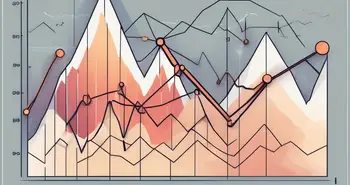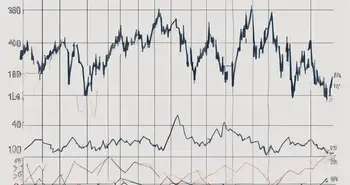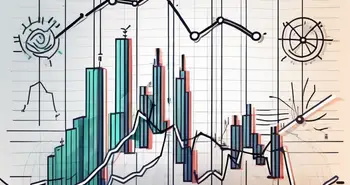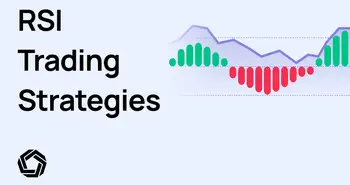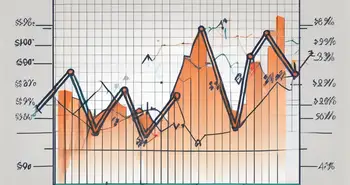The Power of Stochastic RSI
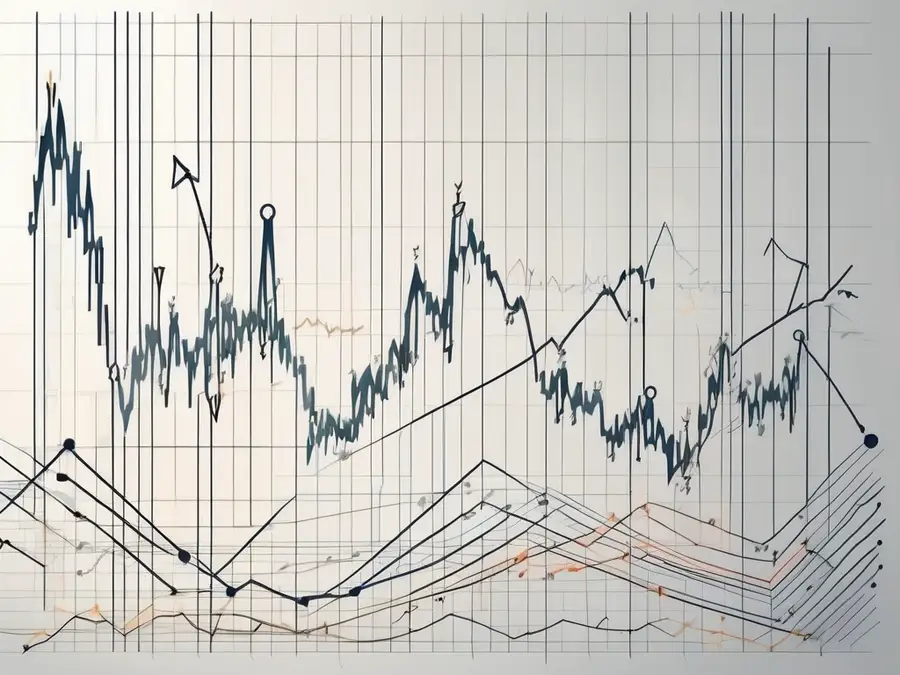
As a seasoned trader, I have come to rely on a powerful tool to help me make informed decisions in the market – the Stochastic RSI. This unique indicator combines two popular technical indicators, the Stochastic oscillator and the Relative Strength Index (RSI), to give traders a deeper insight into market trends and potential trading opportunities. In this article, I will guide you through the basics of Stochastic RSI, its significance in trading, its potential when combined with other indicators, and strategies for trading using this powerful tool.
Understanding the Basics of Stochastic RSI
What is Stochastic RSI?
Before we dive into the details, let's start with the basics. Stochastic RSI is a momentum oscillator that measures the strength and weakness of a security's price by comparing its closing price to its price range over a specific period. It is derived from the Stochastic oscillator, which measures overbought and oversold levels, and the RSI, which evaluates the speed and change of price movements. By combining these two indicators, Stochastic RSI brings together the best of both worlds.
Stochastic RSI is widely used by traders and analysts to identify potential trend reversals and generate buy or sell signals. It is particularly useful in volatile markets where traditional indicators may fall short. The oscillator fluctuates between 0 and 100, with readings above 80 indicating overbought conditions and readings below 20 signaling oversold conditions. These extreme levels can help traders anticipate price reversals and adjust their trading strategies accordingly.
The Mathematics Behind Stochastic RSI
At its core, Stochastic RSI calculates the value of the RSI on a scale of 0 to 100, based on the Stochastic oscillator's %K value and %D value. The %K value represents the strength or weakness of the security's price, while the %D value provides a smoothed version of the %K value. Together, they paint a comprehensive picture of market momentum.
Mathematically, the %K value is calculated as the difference between the security's closing price and the lowest price over a specific period, divided by the highest price and lowest price difference. The %D value is typically a 3-period simple moving average of the %K value. This smoothing effect helps reduce noise and provides a clearer signal of the security's momentum direction. Traders often look for crossovers between the %K and %D lines as potential entry or exit points for their trades.
The Significance of Stochastic RSI in Trading
Predicting Market Trends with Stochastic RSI
One of the key advantages of using Stochastic RSI is its ability to predict market trends. By analyzing overbought and oversold levels, Stochastic RSI can signal potential trend reversals and help traders anticipate price movements. When the indicator reaches oversold levels, it suggests that the security is undervalued and may see a bounce back in price. Conversely, when it reaches overbought levels, it indicates that the security is potentially overvalued and may experience a pullback.
Traders often combine Stochastic RSI with other technical indicators, such as moving averages or Fibonacci retracements, to confirm signals and increase the accuracy of their predictions. This multi-indicator approach provides a more comprehensive view of market conditions and helps traders make informed decisions based on a variety of factors. By incorporating Stochastic RSI into a broader technical analysis strategy, traders can gain a more nuanced understanding of market trends and potential price movements.
Risk Management Using Stochastic RSI
Stochastic RSI is also a valuable tool for managing risk. By using the indicator to identify overbought and oversold levels, traders can set appropriate stop-loss orders to limit potential losses. Additionally, by monitoring divergence in Stochastic RSI, which occurs when the indicator disagrees with the current price trend, traders can identify potential trend reversals and adjust their risk management strategies accordingly.
Another aspect of risk management with Stochastic RSI involves setting realistic profit targets based on the indicator's signals. Traders can use the information provided by Stochastic RSI to establish target levels for taking profits, ensuring that they lock in gains when the market conditions align with the indicator's indications. This disciplined approach to risk management helps traders maintain a balanced portfolio and avoid emotional decision-making based on short-term market fluctuations.
The Power of Combining Stochastic RSI with Other Indicators
Stochastic RSI and Moving Averages
One way to enhance the power of Stochastic RSI is by combining it with moving averages. Moving averages smooth out price fluctuations and provide a clearer view of the overall market trend. By overlaying Stochastic RSI on moving averages, traders can identify convergence or divergence, which can serve as potential buy or sell signals.
Stochastic RSI and Bollinger Bands
Bollinger Bands are another popular tool in technical analysis that measure volatility and price levels. By combining Stochastic RSI with Bollinger Bands, traders can identify periods of low volatility, indicating potential breakouts, or high volatility, suggesting potential reversals. This powerful combination can provide valuable insights for traders looking to maximize their profits.
Interpreting Stochastic RSI Values
Overbought and Oversold Levels
When interpreting Stochastic RSI values, it's important to pay attention to overbought and oversold levels. A Stochastic RSI value above 80 indicates that the security is overbought and may be due for a price correction. Conversely, a value below 20 suggests that the security is oversold and may be ready for a potential upward move.
Divergence in Stochastic RSI
Another important aspect to consider is divergence in Stochastic RSI. When the indicator diverges from the price action, it indicates a potential change in trend. Bullish divergence occurs when the price makes lower lows, but the Stochastic RSI makes higher lows, suggesting a potential upward reversal. Conversely, bearish divergence occurs when the price makes higher highs, but the Stochastic RSI makes lower highs, suggesting a potential downward reversal.
Strategies for Trading with Stochastic RSI
Swing Trading with Stochastic RSI
For swing traders, Stochastic RSI can be a valuable tool for identifying potential entry and exit points. By waiting for the indicator to reach oversold levels and then cross back above, traders can identify potential buy signals. On the other hand, when the indicator reaches overbought levels and then crosses below, it may signal a potential sell opportunity. Combining these signals with other technical analysis tools can further enhance the effectiveness of swing trading strategies.
Day Trading with Stochastic RSI
Day traders can also benefit from using Stochastic RSI in their trading strategies. Intraday price movements can often be volatile and unpredictable, but Stochastic RSI can provide valuable insights into potential reversals and trend continuations. By using shorter time frames and combining Stochastic RSI signals with other indicators, day traders can make more informed and timely trading decisions.
As a seasoned trader, I have seen firsthand the power and accuracy of Stochastic RSI in predicting market trends and identifying profitable trading opportunities. Through years of experience and countless trades, I have fine-tuned my strategies to maximize the potential of this powerful indicator. By understanding the basics of Stochastic RSI, recognizing its significance in trading, exploring its combination with other indicators, and implementing effective trading strategies, you too can unleash the power of Stochastic RSI and elevate your trading game.
FAQ
What is Stochastic RSI?
Stochastic RSI is a momentum oscillator that combines the Stochastic oscillator and the Relative Strength Index (RSI) to provide traders with a comprehensive view of market trends and potential trading opportunities.
How does Stochastic RSI predict market trends?
Stochastic RSI predicts market trends by analyzing overbought and oversold levels. When the indicator reaches oversold levels, it suggests that the security is undervalued and may experience a bounce back in price. Conversely, when it reaches overbought levels, it indicates potential overvaluation and a potential pullback.
How can Stochastic RSI be combined with other indicators?
Stochastic RSI can be combined with other indicators such as moving averages and Bollinger Bands to enhance its predictive power. By overlaying Stochastic RSI on moving averages or using it in conjunction with Bollinger Bands, traders can identify convergence or divergence, providing valuable buy or sell signals.
What are some strategies for trading with Stochastic RSI?
There are various strategies for trading with Stochastic RSI. One popular approach is swing trading, where traders wait for the indicator to reach oversold levels and cross back above for potential buy signals, or reach overbought levels and cross below for potential sell signals. Another approach is day trading, where Stochastic RSI can help identify intraday reversals and trend continuations.
By incorporating Stochastic RSI into your trading arsenal and mastering its nuances, you can unlock its power and gain a competitive edge in the ever-evolving financial markets.
Ready to take your trading to the next level with the strategies you've just learned about Stochastic RSI? Discover the innovative world of Morpher, where you can apply your knowledge on a state-of-the-art trading platform that defies the conventions of traditional investing. With zero fees, infinite liquidity, and the ability to trade a multitude of assets including stocks, crypto, and more, Morpher is the perfect place to harness the full potential of your trading strategies. Sign Up and Get Your Free Sign Up Bonus today to experience the future of trading with the security, flexibility, and control that only Morpher can offer.

Disclaimer: All investments involve risk, and the past performance of a security, industry, sector, market, financial product, trading strategy, or individual’s trading does not guarantee future results or returns. Investors are fully responsible for any investment decisions they make. Such decisions should be based solely on an evaluation of their financial circumstances, investment objectives, risk tolerance, and liquidity needs. This post does not constitute investment advice.

Painless trading for everyone
Hundreds of markets all in one place - Apple, Bitcoin, Gold, Watches, NFTs, Sneakers and so much more.

Painless trading for everyone
Hundreds of markets all in one place - Apple, Bitcoin, Gold, Watches, NFTs, Sneakers and so much more.


